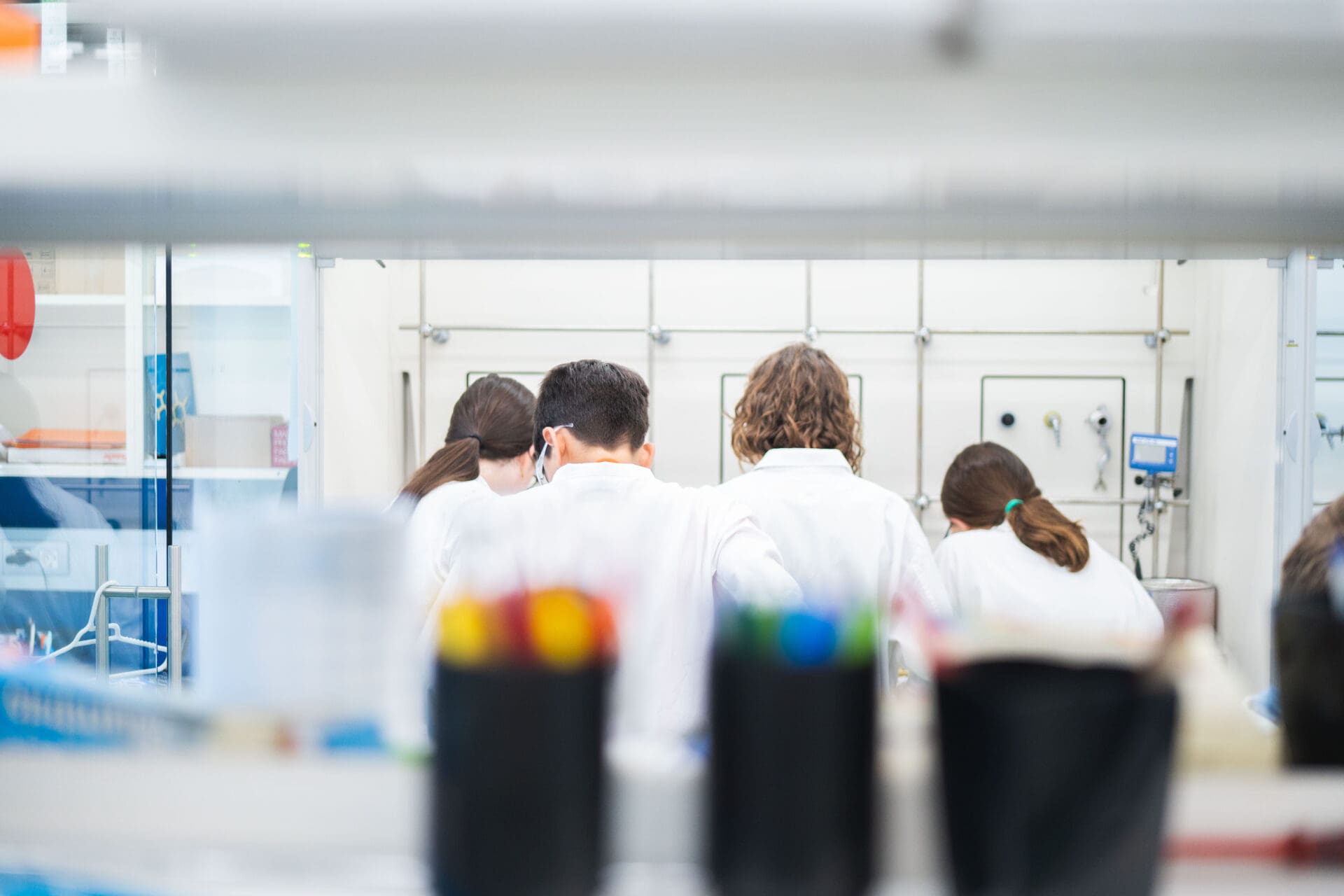Accelerating colours
Objective: Introduce the concepts of reaction rate and catalysis

-
Laboratory materials
3 250 mL round-bottom flasks
1 500 mL Erlenmeyer flask
3 graduated cylinders
-
Reagents
Sodium thiosulfate (Na2S2O3·5H2O), 4 g
Sodium acetate trihydrate (C2H3NaO2·3H2O), 2 g
Sodium hydroxide (NaOH), 2 lentils
Ammonium molybdate ((NH4)6Mo7O24), 1 spatula
Hydrogen peroxide at 10% (H2O2), 20 mL
Universal indicator
Deionized water
-
Safety
Don't forget the gloves, lab coat, and safety goggles!!!
-
Questions
What is the purpose of the “control” flask?
Why does the reaction change color?
Procedure
- In a 500 mL Erlenmeyer flask, dissolve 4 g of sodium thiosulfate pentahydrate, 2 g of sodium acetate trihydrate and 2 lentils of sodium hydroxide in deionized water and adjust the volume to half liter.
- Add universal indicator to this solution until a visible blue color is obtained.
- Add 125 mL of this solution to 3 different 250 mL flasks labeled as “catalyst,” “no catalyst,” and “control.”
- Place the 3 flasks side by side in agitation.
- Add a spatula of ammonium molybdate to the flask labeled as “catalyst.”
- Add the 10 mL of hydrogen peroxide solution simultaneously to the flasks labeled as “catalyst” and “no catalyst.” Leave the third flask as a control to help compare the color.
- Wait for 5 minutes and observe the results.
Theoretical explanation
Three or four minutes after adding hydrogen peroxide, the solution with the catalyst (ammonium molybdate) will change from blue to green, yellow, orange, and finally to red. The solution without the catalyst will follow the same sequence but more slowly and will not achieve the reddish-orange color even after one day.
The reaction that takes place is:
Na2S2O3 + 4 H2O2 Na2SO4 + H2SO4 + 3 H2O
The sulfuric acid produced in the reaction neutralizes the sodium hydroxide (buffered by the sodium acetate) and causes pH changes that result in the color changes of the universal indicator.



















